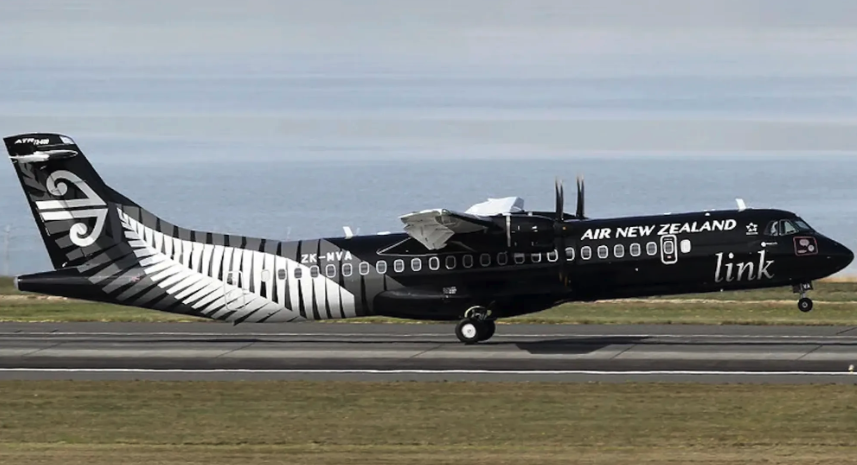- Air New Zealand cuts capacity on three domestic routes due to reduced demand.
- Invercargill to Wellington flights to end in January 2025 amid global engine issues.
- Airline schedules changes for Queenstown, Dunedin, and New Plymouth routes.
Air New Zealand is reducing capacity on three domestic routes by flying smaller planes or reducing the number of flights each day. This follows the airline’s announcement that it will cut services between Invercargill and Wellington from January 2025.
Related:
Air New Zealand To Cut Invercargill To Wellington Direct Flights
Sir Tim Shadbolt Honoured With Terminal Renaming
The changes will see the aircraft used on two routes switch from a 171-seat Airbus A320 to a smaller 68-seat ATR-72. The airline cited a drop in customer demand as the reason for the change, which means a reduction of over 100 seats.
Queenstown to Christchurch: The first morning flight from Queenstown to Christchurch will now be operated using the smaller aircraft. The departure time will be pushed back to just before 9 am. Meanwhile, the Queenstown to Auckland service will increase by two more flights per week.
Dunedin to Wellington: Flights between Dunedin and Wellington will also shift to the smaller ATR-72. Passengers will arrive in Wellington at 8.30 am instead of the current 7.40 am. The last non-stop flight of the day will now be at 4.30 pm. A connecting flight via Christchurch will depart Wellington after 6 pm, replacing the current direct flight at 7.45 pm.
Christchurch to New Plymouth: This route will see three fewer flights each week, cutting back early morning and late evening services on Tuesdays, Wednesdays, and Saturdays.
Blenheim to Wellington: There are no reductions in capacity on this route, but the first flight will now depart slightly later than before.
In a statement, Air New Zealand explained that the adjustments are a response to reduced demand amid challenging economic conditions, combined with some aircraft being unavailable due to global engine maintenance issues. Scott Carr, Air New Zealand’s General Manager Domestic, stated that customers who have already booked flights are being rebooked and that it’s not uncommon for the airline to update its schedules in this manner.
The airline’s capacity reductions highlight the impact of economic pressures and global supply chain disruptions on the aviation sector. These changes, particularly the reduction from a 171-seat jet to a 68-seat turboprop, indicate a significant scaling down of services in response to the current environment.


